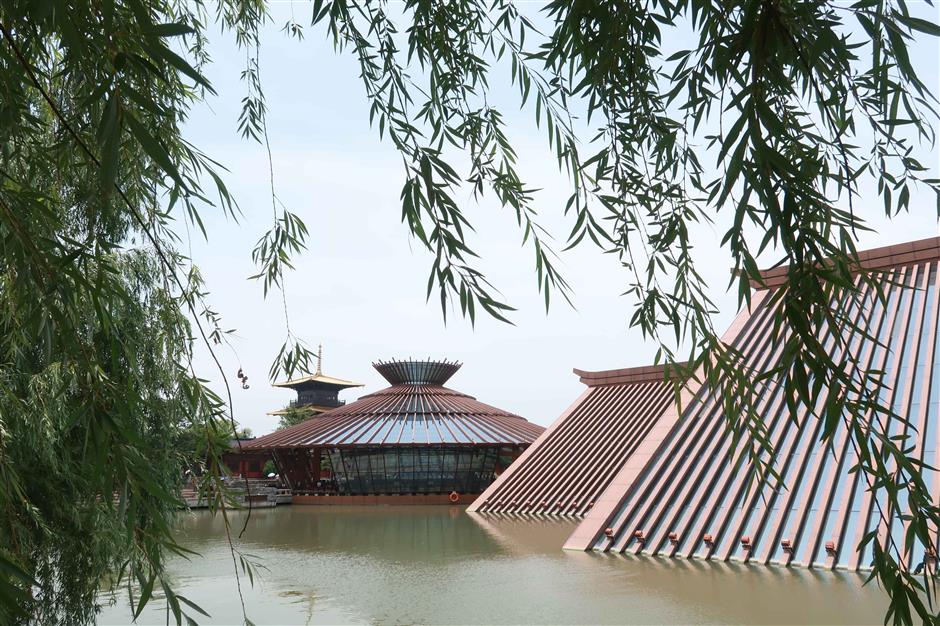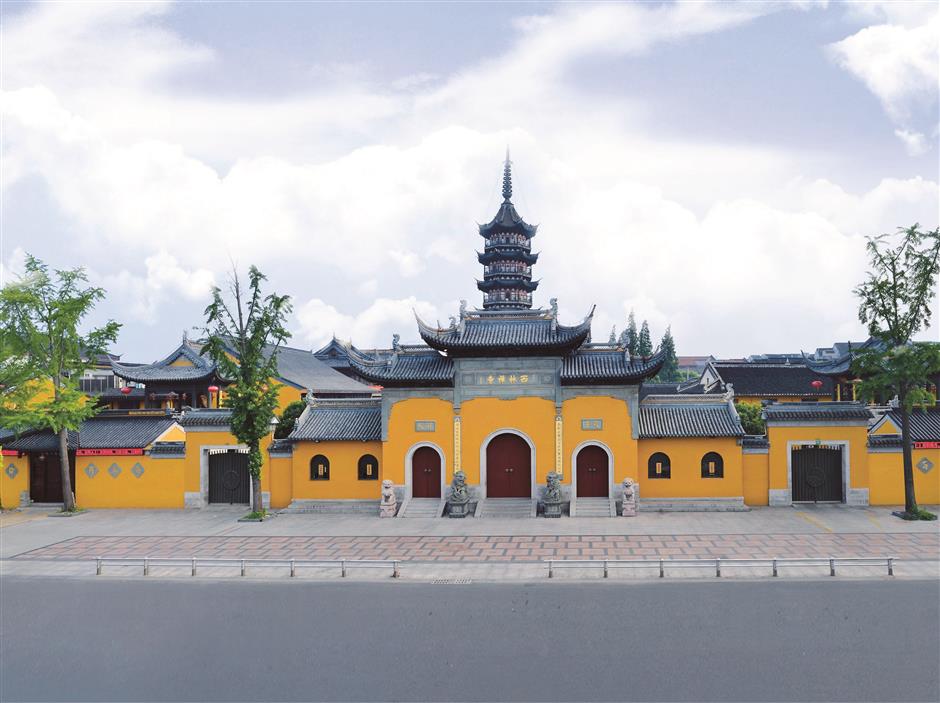Songjiang offers welcoming cultural sideshow to international expo
As the China International Import Expo is underway in Qingpu
Zuibai Pond Park
With its centuries-old trees, lush greenery, rippling waters and stately pavilions, the 5-hectare park is one of Shanghai’s oldest and most beautiful examples of a classical Chinese garden.
The essence of a Chinese garden lies in its skillful recreation of nature. In addition to delicate architecture, the rock mountains, ponds, planted trees and flowers accentuate nature in a limited space. Sculptures and paintings are often added to merge nature with philosophy and culture.
Its landscape architecture draws from the classical style of halls, waterside pavilions, kiosks, verandas and rockeries. Long corridors lead visitors to all corners of the garden, offering snapshot views on sunny days and sheltering spots during rain. It is an comforting place to wander and linger, to meditate and find solace.
Entering through the original front door, visitors are greeted by a stone screen wall, estimated to be around 300 years old and embossed with scenes of the park.
Along the winding cobblestone path is Diaohua Hall. Its beautifully carved doors and window frames hark back to the architectural prowess of Zhang Zunan in the Ming Dynasty (1368-1644).
Venture further into the park and you will find Xuehai Hall, built in the late Qing Dynasty (1644-1911). It is famous for being the site where Dr Sun Yat-sen, the founding father of the Republic of China (1912-1949), made an important speech in 1912.
Zuibai Pond sits at the heart of the garden. The park’s cultural works reflect visits by generations of high-ranking officials, scholars and artists. In every corner of the garden you’ll find sculptures, old calligraphy and other art pieces.
The park is famous for its seasonal floral displays. In summer, the pond is smothered with luxurious lotus blossoms. In the autumn, chrysanthemum and sweet-scented osmanthus are in season. The park has almost 200 osmanthus trees, including two century-old trees in Xuehai Hall.
Address: 64 Renmin Rd S.
Admission: 12 yuan/US$1.74 (free admission for visitors 65 years and older)

Zuibai Pond Park
Guangfulin Relics Park
About 4 kilometers from Sheshan Hill, the relics park unfolds the history of Shanghai. It was built on the original archeological site, which was discovered in 1958 by local farmers digging a new waterway where they found ancient pottery shards.
In 1961, archeologists began the first systematic excavation of the site, unearthing a large volume of pottery vases, spinning wheels, cooking vessels and dishes, which proved the existence of a culture that thrived some 4,000 years ago.
Archeologists also unearthed sharpened stone weapons and tools, such as axes, knives, chisels and shovels.
Excavations, from 1961 to 2008, revealed a large number of bronze shards, wooden craft items and turtle shells, which were used to foretell the future of ancient China. Two tombs were also discovered. One contained the skeleton of a pig, while the other held the remains of a dog. These antique items indicated that the Guangfulin ancestors migrated from the north. They tramped over mountains, waded across rivers and finally settled in the city. To some extent, they were the first migrants of the melting pot of Shanghai.
The relics park includes a cultural zone, a farmland protection area and there’s an old watertown providing Chinese-style accommodation outside the park. In the farmland zone, rice, corn, sunflowers, pears and peaches are cultivated.
Located on the banks of the Shenjing River, Guangfulin was a traffic hub in days gone by. Today it is the city’s new cultural and historic destination.
The cultural zone is the highlight of the park, with more than 10 themed museum areas and memorial halls. They include the Museum of Guangfulin Archeological Remains, a memorial hall dedicated to Songjiang poet Chen Zilong (1608-1647) and the Fulin Porcelain Museum.
The museum complex is in the shape of three ancient jars, earning it the local nickname “jar museum.” The museum is built underwater with their roofs on the surface.
Each building in the park is constructed of old bricks, tiles and wooden posts collected from nearby villages. All the materials are more than 100 years old. The site has cobblestone streets and buildings with whitewashed walls and gray tiles in the architectural style of old Anhui Province.
The relics park, including the Zhiye Buddhism, Chenghuang and Guandi temples, is partially opened to the public now.
Many shops are setting up in the park. Several coffee bars, goat meat restaurants and teahouses have already opened. The Duoyun Bookstore, in the style of old Anhui architecture, offers a quiet place for visitors to have a moment of peace with books and tea or coffee.
Address: 3260 Guangfulin Rd
Admission: 15-50 yuan

Guangfulin Relics Park
Xilin Temple
Surrounded by bustling streets and shopping malls sits Xilin Temple, a Buddhist shrine with a history dating back more than 700 years.
Four stone lions guard a stately front door of brick, stone and wood. Near the door is a central square paved with cobblestones and decorated with neatly trimmed pine bonsai. Doves stroll casually around fed by pious Buddhism followers passing by.
No one speaks. Everything is quiet, as monks and visitors enjoy the precious peace and tranquility of the temple. Only sunrise bells and sunset drums break the silence.
In the center of the square is a bronze lamp carved with Buddhism scriptures on its eight facades.
On the east and west sides are the bronze bell, weighing about 2 tons, and the drum, which is 2 meters in diameter. Its creation was financed by donations from over 100 Buddhists.
In 1992, the temple went through a major facelift, sponsored by Songjiang Museum. When the workers removed the ornament at the top of the pagoda, a large number of old treasures were found, including ancient coins, golden Buddha statues and gold, silver and jade relics bearing the carved history of the temple’s major events.
From the pagoda’s foundation, experts dug out more statues, jade rings, ink slabs and bowls, scriptures and accessories made of amber, agate, crystal, jade and red coral dating back to Song Dynasty (960-1279).
The biggest discovery was small balls made from a crystalline-like material, owned by Master Yuanying, who founded the temple. Today the temple is a holy place for devout followers, a tourism attraction for visitors and a venue for locals to pray for a happy life.
For Spring Festival, going to the temple to burn joss sticks is a traditional activity after the family feast on the eve of the Lunar New Year. From midnight to dawn, the Xilin Temple is always crowded with pious prayers and roads are often clogged that the police are dispatched to keep order.
Address: 666 Zhongshan Rd
Admission: 6 yuan

Xilin Temple
















